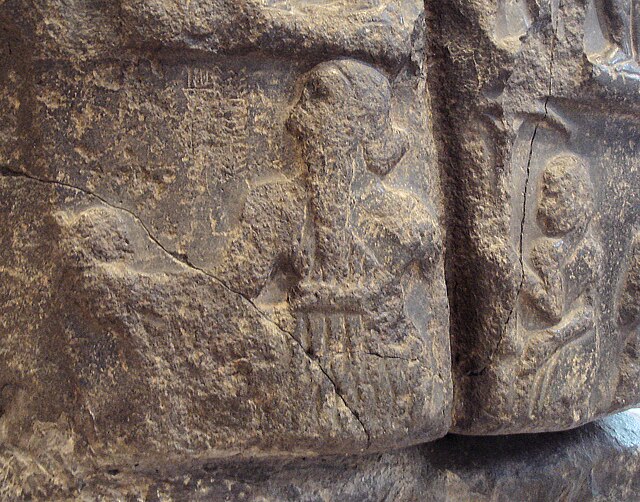The Bassetki Statue is a monument from the Akkadian period in Mesopotamia. It was discovered in the 1974 during road construction near the site of the village Bassetki for military purposes. The pedestal contains an inscription in Akkadian, indicating that the statue once stood in the doorway of a palace of the Akkadian ruler Naram-Sin.
The Bassetki statue in its display case at the Iraq Museum in Baghdad, March 2019. The inscription is in old Akkadian cuneiform.
Image: Cuneiform inscription on the the Bassetki statue, Akkadian period, 23rd century BCE, from Bassetki, Iraq. Iraq Museum (corrected for perspective)
The Akkadian Empire was the first known ancient empire of Mesopotamia, succeeding the long-lived civilization of Sumer. Centered on the city of Akkad and its surrounding region, the empire would unite Akkadian and Sumerian speakers under one rule and exercised significant influence across Mesopotamia, the Levant, and Anatolia, sending military expeditions as far south as Dilmun and Magan in the Arabian Peninsula.
Bronze head of an Akkadian ruler, discovered in Nineveh in 1931, presumably depicting either Sargon or, more probably, Sargon's grandson Naram-Sin.
Sargon on his victory stele, with a royal hair bun, holding a mace and wearing a flounced royal coat on his left shoulder with a large belt (left), followed by an attendant holding a royal umbrella. The name of Sargon in cuneiform ("King Sargon") appears faintly in front of his face. Louvre Museum.
Akkadian official in the retinue of Sargon of Akkad, holding an axe
Prisoners escorted by a soldier, on a victory stele of Sargon of Akkad, circa 2300 BC. The hairstyle of the prisoners (curly hair on top and short hair on the sides) is characteristic of Sumerians, as also seen on the Standard of Ur. Louvre Museum.






